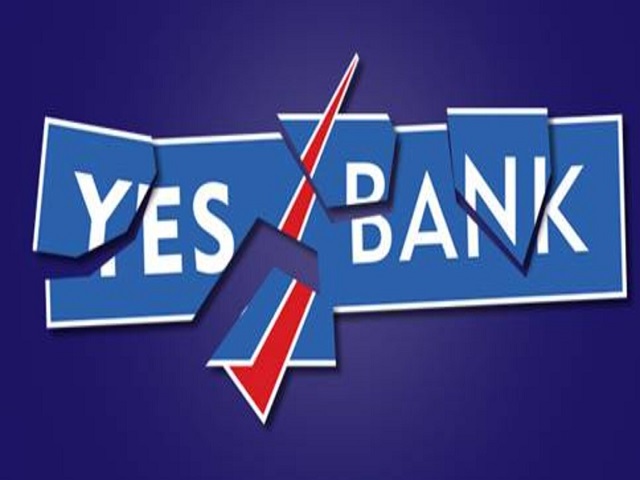On 5th of this month a yet another disappointing news came for the Indian banking sector that YES BANK, fourth largest private lender has been put under moratorium(temporary ceasing of operations) by the government at the suggestion of RBI. The moratorium has been put for a period of 30 days from 5th March to 3rd April. Deposit withdrawals have been capped at ₹50,000 except in certain circumstances like education, medical treatment, marriage or any other unavoidable circumstances for which withdrawal limit is ₹500,000. RBI has superseded the bank’s board and appointed Chief Financial Officer and Deputy Managing Director of SBI Prashant Kumar as an administrator, who has resigned from SBI to take the new charge.
What led to this situation?
Most of the lending by YES BANK has been to distressed borrowers like Reliance Group, DHFL and IL&FS. As on 31st March, 2014 bank’s loan book was standing at ₹55,633 crore and deposits worth ₹74,192 crore. At the end of 2nd quarter (September) 2019, the same was ₹2,24,505 crore and 2,09,497 crore respectively, i.e. in last 5 years bank loan grew by 4 times while the deposits grew by less than 3 times. Bank’s Gross Non Performing Assest (GNPA) increased from 0.31% in March 2014 to 7.39% in September 2019. Established in 2004 by banker Rana Kapoor, bank focused more on advances in its initial years. It was after 2014 that the bank started to grow its assets at a rapid pace. January was the tipping point when the bank’s Audit Committee Chairman Uttam Prakash Agrawal resigned citing governance issues. Earlier RBI had declined extension of Rana Kapoor’s tenure as CEO and MD of the Bank. Moody had also downgraded the bank’s ratings in November 2018.
Moratorium Impact
As soon as the news broke out, the shares of Yes Bank tumbled 56%. SBI also lost a little over 6% in share market which has been chosen as its bailout partner which will acquire 49% of restructured Yes Bank shares. It also affects Mutual Fund business. According to Value Research (a mutual fund tracking agency), Yes Bank has the exposure worth ₹2,783 crore of mutual funds. It consists 9 MFs worth more than ₹100 crore. Whenever the shares of any company depreciate, it also impacts those MFs in which the stocks of that company are involved. PhonePe’s services whose acquirer bank or Payment Service Provider is Yes Bank is also affected.
Different From PMC Crisis
It is different from PMC crisis in the sense that PMC crisis involved dummy accounts. It is the problem of bad loans. Also PMC was a Co-operative society on which the moratorium was imposed for 6 months while in this case moratorium is for 1 month. Also the withdrawal limit in PMC case was ₹1,000 initially which was later increased but in this case it is ₹50,000.
Responses
Former Finance Minister P. Chidambaram has alleged that when overall bank credit during March 2014 to March 2019 has increased by about 10% how did the Yes Bank’s loan book grow by 35%? Congress leader Rahul Gandhi took a dig saying “No Yes Bank”. RBI governor Shaktikanta Das said -“The resolution of Yes Bank will be done very swiftly, it will be done very fast. The 30 days which we have given is the outer limit. You will see very swift action from RBI. We stand committed to maintaining stability of the financial and banking sector.” Finance Minister Nirmala Sitharaman said that government is committed to ensure that the depositors’ interest is safeguarded and urged RBI to ensure due process of law so as to find out who are responsible for this problem of such magnitude. Vijay Bushan, president of Association of National Exchanges Members of India (ANMI), the umbrella body of stock brokers, has urged the RBI to exempt outstanding market transactions involving a Yes Bank account.
Rescue Plan
The Reserve Bank of India, a day after the crisis was unfolded, came up with a draft for restructure of stressed Yes Bank, bringing SBI as an investor who will acquire 49% i.e. ₹2,450 crore of ₹5,000 crore of authorized capital of restructured Yes Bank. Many experts are raising question that why this bank has not been put under Prompt Corrective Action (PCA), specifically made to address such problems. SBI as major investment partner also shows the government is left with no other healthy bank.
Earlier RBI gave almost one year to the bank for market led revival in which it was expected that private investors would infuse capital and revive it but that didn’t happen. A yet another option was that government would have taken over it, making it a public sector bank. It could also have been merged with any major bank say SBI. But RBI chose to restructure it. It is expected that SBI will acquire 49% of its shares and rest be acquired by LIC and some private investors.
It remains to be seen whether the rescue plan clicks or not and if not, then what further action government takes. Indian Banking Sector is already facing severe NPAs crisis. The economy is doing very badly and the problem is aggravated by noble Corona Virus. Revival of Yes Bank is necessary otherwise the confidence of investors and general public in our banking sector may further erode.
